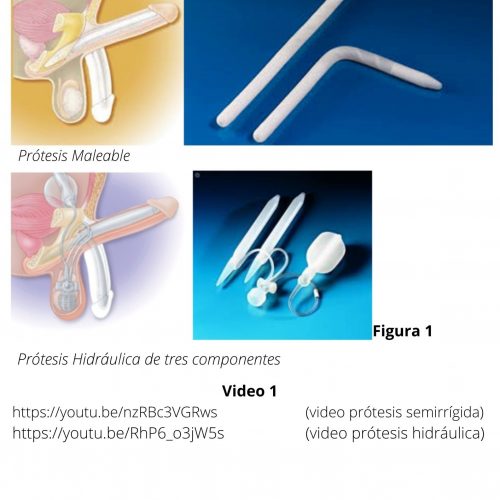Erectile dysfunction (ED) is a A problem that affects millions of men around the world, and that has a Great impact on their quality of life and that of their partners. It’s still a taboo subject and, therefore, those affected consult little with their doctor. However It is necessary to talk about this pathology to demystify it since, in addition, it usually have a solution.
We can define erectile dysfunction as The persistent inability to achieve and/or maintain an erection sufficient to allow penetration. According to the Association Spanish Andrology, Sexual and Reproductive Medicine (ASESA), in Spain, erectile dysfunction affects 1 in 5 men to a greater or lesser extent degree.
One of the reasons why it is important Paying attention to erectile dysfunction is because it can be the first sign of cardiovascular disease.
Erection is a multifactorial neurovascular phenomenon which occurs under hormonal control and in a specific psychological environment. Of This way we can understand that any neurological, vascular pathology, hormonal or psychological can alter the mechanisms of erection.
The main causes of ED are those related to cardiovascular disease such as hypertension, diabetes, cholesterol high, tobacco, sedentary lifestyle and overweight. There are also other causes physical such as alcohol, drugs, chronic diseases (lungs, heart, liver or kidneys especially), hormonal alterations (testosterone, prolactin, thyroid hormone) or neurological disorders (multiple sclerosis or spinal cord injuries, for example). Many of these pathologies are more frequent in older people, so erection problems increase with age.
Surgery, Like the one practiced in prostate cancer, it is another possible cause. The radical prostatectomy in any of its forms (open, laparoscopic, or robotics) is an intervention that is widely practiced in cancer patients of clinically localized prostate and a minimum life expectancy of 10 years. This intervention may lead to specific sequelae of the treatment that affect sexual health-related quality of life. The Research has revealed that around 25%-75% of males have POSTOPERATIVE.
Some medications may facilitate the appearance also of this pathology.
Finally, psychological factors , such as anxiety or stress, are behind more than 20% of cases of erectile dysfunction.
The first and perhaps most important step in reaching the diagnosis of ED is the realization of an adequate clinical history aimed at determining its most likely cause, differentiating between an organic or psychogenic origin. Is It is important to also assess the patient’s sexual partner, if it exists in a stable, emphasising the quality of that relationship and whether the ED has affected by it. A physical examination should be performed in every patient general, reserving the performance of specialized complementary tests for the differential diagnosis between a psychogenic and organic nature of the process.
In any case, erectile dysfunction has Different treatments that allow you to enjoy sex Full. It is very important to consult the doctor, identify the causes and, with the necessary information, choose the most appropriate treatment for each case.
There is a general consensus in recommending an introduction staggered from the various existing treatment modalities, starting with advising to lead a healthy lifestyle and modification of harmful habits, continuing with psychological help and sexual advice, symptomatic pharmacological treatment (oral or local) and/or vacuum devices (vacuum) and, finally, in those patients who do not respond to other treatments or who prefer a permanent solution to your problem may Penile prosthesis surgery is indicated.
There are different types of prostheses: malleable (semi-rigid) and hydraulic (two- or three-component) ( Figure 1 ). The most advanced model is the integrated hydraulic prosthesis of three Components. This consists of two cylinders that are implanted in both bodies. cavernous penis, an activation mechanism located in the scrotum and a reservoir lodged in the vicinity of the bladder. The mechanism is nothing more than a Hydraulic system that mobilizes the liquid between the different components of the prosthesis to increase or decrease the rigidity of the penis according to the demand of the patient. ( Video 1 )

Most patients prefer three-piece devices because of the more “natural” erections that are achieved. A semi-rigid prosthesis provides a constantly rigid penis although it can be oriented in different positions and can be ideal in elderly patients with less manual dexterity and infrequent sexual intercourse.
Herself placed through a small incision in the scrotum or at the dorsal base of the penis, which leaves a scar that is inconspicuous. Require general anesthesia or spinal anesthesia, although semi-rigid prostheses can be implanted with local anesthesia and a 24-hour hospital admission. The postoperative period is usually be short and usually after 4-6 weeks, relationships can be resumed Sexual. Sensation, touch and orgasm are not affected after Placement of the prosthesis.
The two Main complications of penile prosthesis implantation are mechanical failures and infection. Technical advances and modifications applied to these systems in recent years have made it possible to reduce these systems. complications in less than 3% of cases.
Prosthesis implantation has one of the highest satisfaction rates (70%-87%) of treatment options of ED, provided that an adequate selection of the suitable patient is made for this type of treatment.
Thus, penile prostheses provide high levels of postoperative satisfaction, even higher than the rest of the treatments available for ED, also improving the self-esteem of patients, the emotional relationship of the couple and the quality of life of both.
ANNEX URL VIDEOS
https://youtu.be/nzRBc3VGRws (Video semi-rigid prosthesis)
https://youtu.be/RhP6_o3jW5s (hydraulic video prosthesis)
Doctor Joaquim Sarquella Geli
Andrology

